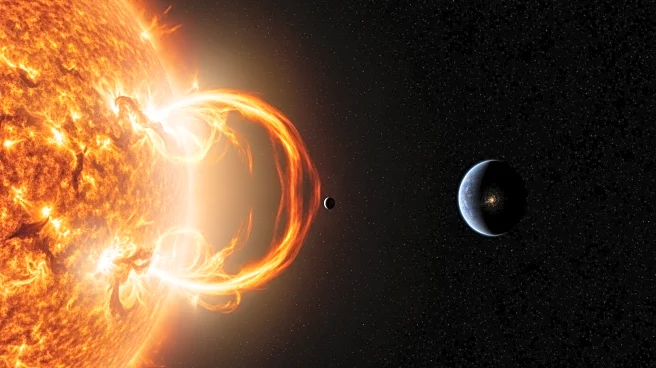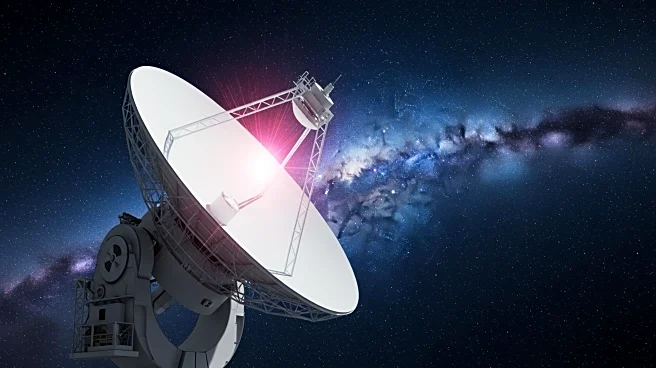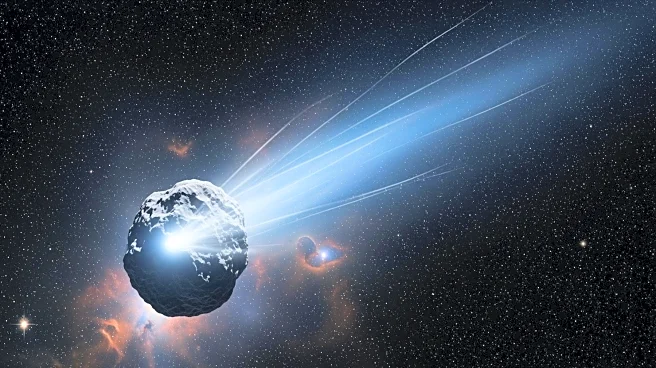What's Happening?
Astronomers have observed a coronal mass ejection (CME) from a red dwarf star, marking the first confirmed detection of such an event from a star other than the sun. The CME, detected using the LOFAR radio
telescope and ESA's XMM-Newton, was powerful enough to strip away the atmosphere of any nearby planets. This discovery has significant implications for the search for habitable exoplanets, as red dwarfs are common targets for such searches.
Why It's Important?
The detection of a CME from a red dwarf star highlights the challenges of finding habitable planets around these stars. Red dwarfs are known for their high activity levels, which can threaten the stability of planetary atmospheres. Understanding the frequency and intensity of CMEs is crucial for assessing the habitability of planets in these systems. This discovery provides valuable data for refining models of stellar activity and its impact on exoplanets.
What's Next?
Future observations with advanced telescopes like the Square Kilometer Array are expected to detect more CMEs from distant stars, providing a clearer picture of their impact on planetary atmospheres. This research will inform the criteria used to identify potentially habitable planets and guide the search for life beyond Earth.
Beyond the Headlines
The study underscores the importance of considering stellar activity in the search for habitable planets. It also highlights the need for international collaboration and advanced observational techniques to expand our understanding of the universe. The findings may lead to a reevaluation of the criteria used to assess exoplanet habitability.











